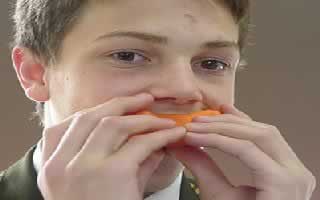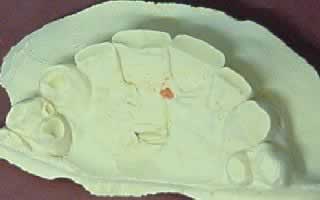Teeth marks




Teeth marks |
|
| Students can make plaster casts of their own teeth. Bite marks are as unique as finger prints and can be used to identify suspects at the scene of a crime. | |
 |
Each student is given a piece of plasticine. They roll the plasticine into a thick rod. They then place the plasticine in their mouth and bite softly into it with their upper teeth. Using the fingers they press the plasticine around their teeth to create a better mould. |
| The imprints left in the mould are very detailed and can now be cast using plastic resin or plaster. |  |
 |
Plaster is now mixed with water until it is as thick as honey. It is then poured into the mould and allowed to set hard. |
| The end result is very spectacular. Small details are visible and the cast can be used to identify students in the class. |  |
| Set up a crime scene in the classroom. Ask one of the students to bite into an apple. Place the apple in the room along with other evidence. Students are then asked to collect all the evidence they can from the scene. Students should volunteer to have casts of their teeth made in order to identify the suspect. | |